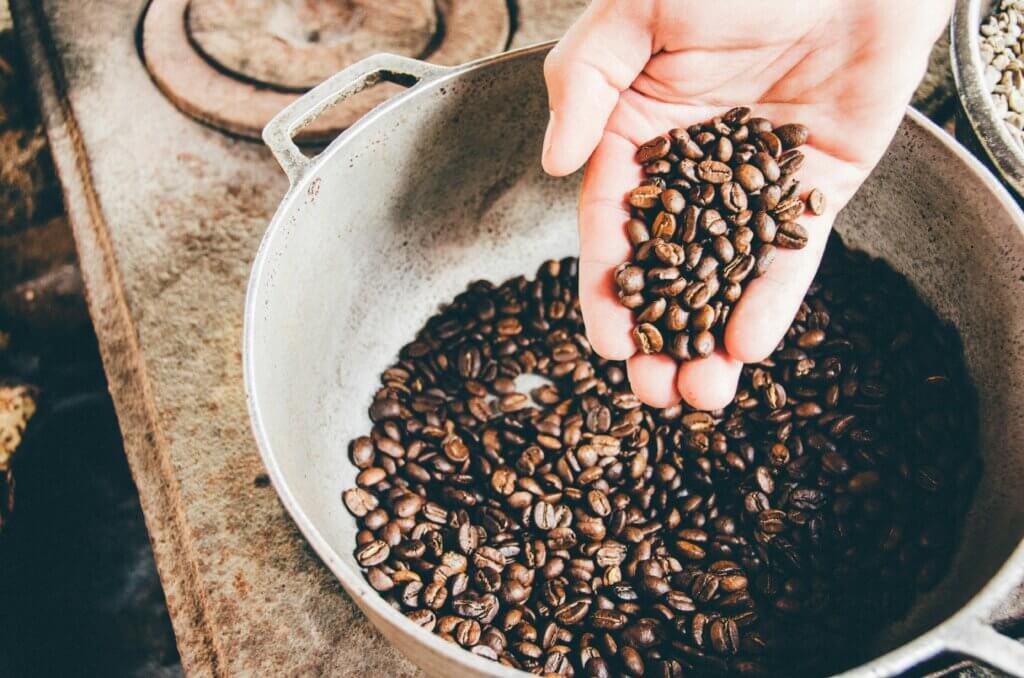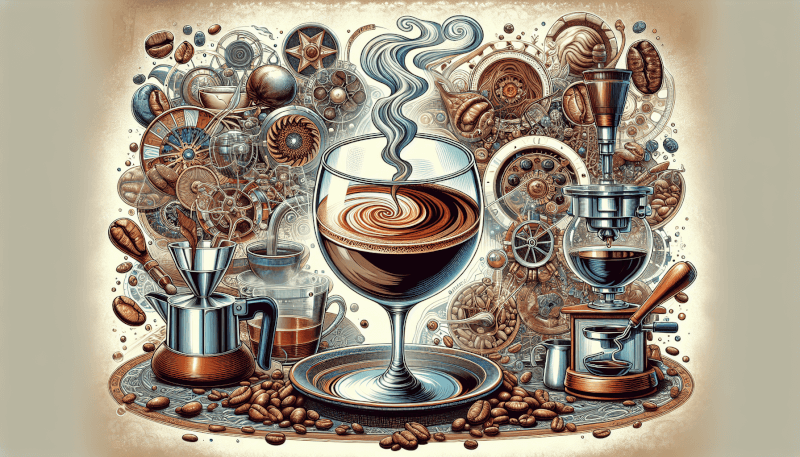In this article, you will discover easy yet effective ways to enhance your palette for evaluating the quality of coffee. Whether you’re a coffee enthusiast or simply want to improve your discernment skills when it comes to coffee, these tips will help you unlock a world of flavors and aromas. By following these recommendations, you’ll soon be able to identify the nuances in different coffee blends and appreciate the subtleties that make each cup unique. So grab your favorite mug and get ready to embark on a journey of discovery and appreciation for the incredible world of coffee.
Understanding the Basics of Coffee Tasting
Coffee tasting is an art that allows you to fully appreciate and evaluate the flavors and nuances of this beloved beverage. By developing a refined palette, you can unlock a world of complex flavors and aromas that coffee has to offer. Whether you’re a casual coffee drinker or a dedicated enthusiast, understanding the basics of coffee tasting can greatly enhance your drinking experience.
One of the key elements in coffee tasting is the role of your taste buds and olfactory senses. Your taste buds are responsible for detecting the basic tastes of sweetness, sourness, bitterness, and saltiness, while your olfactory senses play a crucial role in detecting the aroma and flavors of the coffee. Together, these senses work in harmony to create a full sensory experience when tasting coffee.
To fully explore the different flavor components of coffee, it is important to understand and identify the various tasting notes. Coffee has a wide range of flavors, including fruity, floral, nutty, chocolaty, and earthy. These flavors can vary depending on the origin, roast level, and brewing method of the coffee. By familiarizing yourself with these flavor components, you can better appreciate and evaluate the taste and quality of the coffee you are drinking.
An essential tool for coffee tasting is the Coffee Taster’s Flavor Wheel. This comprehensive diagram categorizes the different flavors and aromas commonly found in coffee, helping you to identify and describe the specific characteristics of each cup. The flavor wheel provides a standardized language for discussing and evaluating coffee, making it easier to communicate your preferences and experiences with others.
Improving Sensory Perception
Developing a keen sense of smell is essential for enhancing your ability to discern flavors in coffee. Your sense of smell is closely tied to your taste buds, as many flavors are perceived through the olfactory senses. To train your sense of smell, you can engage in aroma exercises by smelling different scents and trying to identify them. This can be as simple as sniffing various spices or fruits and noting the distinct aromas.
Another way to enhance your ability to discern flavors is by actively practicing sensory exercises and cupping sessions. Cupping sessions involve a structured process of evaluating and comparing different coffees side by side. By practicing cupping, you can train your palate to distinguish between subtle flavor differences and develop a deeper understanding of coffee’s complexity.
Keeping a coffee tasting journal is a valuable practice for documenting your sensory experiences and tracking your progress in developing your palette. In your journal, you can record your observations, describe the flavors and aromas you detected, and note any preferences or changes in your taste preferences over time. This journal serves as a valuable reference and can help you refine your palette further.

Exploring Coffee Varieties and Origins
Understanding the impact of coffee bean origins is crucial for appreciating the diversity of flavors in coffee. Coffee beans are grown in different regions around the world, each with its own unique climate, soil composition, and cultivation practices. These factors greatly influence the flavor profile of the coffee, resulting in distinct characteristics and qualities.
To fully explore and appreciate the differences between coffee varieties, you can taste and compare coffees from various regions. Ethiopian coffees, for example, are known for their bright acidity and fruity flavors, while Colombian coffees often have a balanced profile with notes of chocolate and nuts. By experiencing the range of flavors and profiles offered by different origins, you can expand your knowledge and develop a deeper appreciation for the world of coffee.
In addition to exploring single-origin coffees, you can also delve into the world of blended coffees. Blends are created by combining coffees from different regions to achieve a desired flavor profile. Blends offer a unique experience, as they allow for the creation of complex and balanced flavors that may not be found in single-origin coffees. By tasting and comparing different blends, you can discover your personal preferences and understand the art of creating harmonious coffee blends.
Understanding Roasting Techniques
Roasting plays a crucial role in developing the flavor of coffee. Different roasting techniques can greatly influence the taste and aroma of the final product. Light roasts are generally more acidic and highlight the unique characteristics of the coffee beans. Medium roasts strike a balance between acidity and sweetness, offering a well-rounded flavor profile. Dark roasts produce bolder flavors with hints of caramelization and bitterness.
By exploring the different roast profiles, you can recognize the common characteristics associated with each roast level. Light roasts often have floral or fruity notes, while dark roasts tend to have smoky or chocolatey flavors. It is also important to be able to identify under or over-roasted coffees, as these can greatly impact the overall taste and quality of the brew.

Brewing Methods and their Impact
The brewing method used can significantly affect the flavor profile of the coffee. Different brewing methods, such as pour-over, French press, and espresso, extract the flavors from the coffee grounds in unique ways, resulting in different taste experiences. It is essential to understand the relationship between brewing and flavor to fully appreciate the nuances of the coffee.
Comparing different brewing methods can be an exciting way to explore the diverse flavors coffee has to offer. Pour-over brewing, with its precise control over water flow and extraction time, often produces a clean and bright cup with pronounced acidity. French press brewing, on the other hand, yields a heavier body and a more robust flavor due to its full immersion brewing process. Espresso brewing extracts concentrated flavors and creates a rich, full-bodied cup.
Brewing variables, such as water temperature, grind size, and brew time, also play a significant role in determining the taste of the coffee. By experimenting with these variables, you can uncover the range of flavors and nuances that different brewing techniques can bring out in the coffee.
Developing the Ability to Detect Acidity and Brightness
Acidity is a fundamental aspect of coffee flavor and is often described as a desirable characteristic. Understanding the concept of acidity in coffee involves recognizing the bright, vibrant, and tangy flavors that it imparts. Acidity adds complexity and liveliness to the coffee, enhancing the overall taste experience.
It is important to differentiate between acidity and sourness when evaluating coffee. While acidity contributes to a pleasant tartness, sourness indicates a flaw or over-extraction in the brewing process. Developing the ability to distinguish between the two will help you identify well-balanced and high-quality coffees.
Brightness is closely related to acidity and refers to the intensity and liveliness of the flavors in the coffee. It is the spark that adds vibrancy and excitement to your cup. Training your palette to detect acidity and brightness involves actively seeking out these qualities in the coffee you taste and comparing their presence in different brews.

Identifying Flavor Profiles and Aromas
To effectively assess and describe the flavors in coffee, it is essential to learn the language of coffee flavor descriptors. Coffee flavor profiles often include descriptors such as fruity, floral, nutty, chocolaty, or earthy. Familiarizing yourself with these terms can help you articulate the specific notes you detect in a cup of coffee.
By training your taste buds to identify specific flavors, you can begin to recognize the distinct flavors and aromas in different types of coffee. Paying attention to the nuances in flavors, such as the specific fruit notes or subtle floral undertones, can greatly enhance your ability to appreciate and evaluate the quality of the coffee.
Fragrance and aftertaste also play a significant role in coffee tasting. The fragrance of the coffee, experienced while the coffee is still brewing, can give you a preview of the flavors that will unfold in the cup. Similarly, paying attention to the aftertaste, or the lingering flavors that remain after swallowing, can provide valuable insights into the overall quality and balance of the coffee.
Assessing Body, Mouthfeel, and Texture
Body, mouthfeel, and texture are important components of the coffee drinking experience. Body refers to the weight or thickness of the coffee on your tongue, ranging from light to medium to full-bodied. Evaluating the body of a coffee allows you to understand the overall mouthfeel and richness of the brew.
Mouthfeel, on the other hand, relates to the sensation and texture of the coffee in your mouth. Some coffees may feel smooth and velvety, while others may have a more oily or gritty texture. Developing a vocabulary to describe these characteristics will help you communicate your preferences and experiences more effectively.
It is essential to consider these sensory aspects when evaluating coffee as they greatly contribute to the overall enjoyment and satisfaction of the drinking experience.

Considering the Balance and Finish
Balance is a central concept in coffee tasting and refers to the harmonious interplay of flavors in a cup of coffee. A well-balanced cup will have a pleasant synergy between acidity, sweetness, bitterness, and other flavor components. Recognizing this balance requires an understanding of the flavor profiles and the ability to identify and appreciate the relationship between different taste elements.
The finish, also known as the aftertaste, is the final impression left by the coffee. Evaluating the finish involves paying attention to the lingering flavors and overall satisfaction after swallowing the coffee. A well-balanced and high-quality coffee will often have a pleasant and lingering finish, while a lower-quality coffee may leave an unpleasant or short-lived aftertaste.
Developing an understanding of your personal preferences regarding balance and finish will help guide your choices and allow you to explore different coffees that align with your taste preferences.
Practicing Regular Cupping Sessions
Consistent practice is key to developing and refining your palette for evaluating coffee quality. Regular cupping sessions provide an excellent platform for honing your tasting skills and expanding your knowledge. Cupping involves a step-by-step evaluation process that allows you to compare and assess different coffees objectively.
Setting up a cupping session at home can be a rewarding experience. You can select different coffees, prepare them using the same brewing method, and evaluate them side by side. This methodical approach enables you to focus on the specific flavors and characteristics of each coffee, helping you to develop a deeper understanding of what you enjoy and appreciate.
During cupping sessions, it is important to follow guidelines to ensure consistency and accuracy in your evaluations. These guidelines include factors such as water temperature, coffee-to-water ratio, grind size, and steeping time. By adhering to these guidelines, you can ensure fair and consistent comparisons between different coffees.
Lastly, seeking feedback from other coffee enthusiasts can be immensely helpful in improving your coffee tasting skills. Joining a coffee cupping group or engaging in discussions with fellow coffee lovers can provide new perspectives and insights. Sharing your thoughts and experiences with others who are passionate about coffee can enrich your understanding and appreciation for this versatile beverage.
In conclusion, understanding the basics of coffee tasting and developing your palette takes time and practice. By actively engaging your senses and exploring the diverse flavors, aromas, and characteristics of coffee, you can develop a deeper appreciation for this beloved beverage. With each cup you taste and evaluate, your ability to discern and articulate the nuances of coffee will continue to grow, allowing you to embark on a lifelong journey of coffee discovery. So grab your favorite coffee, take a moment to savor the flavors, and begin your adventure into the world of coffee tasting.



